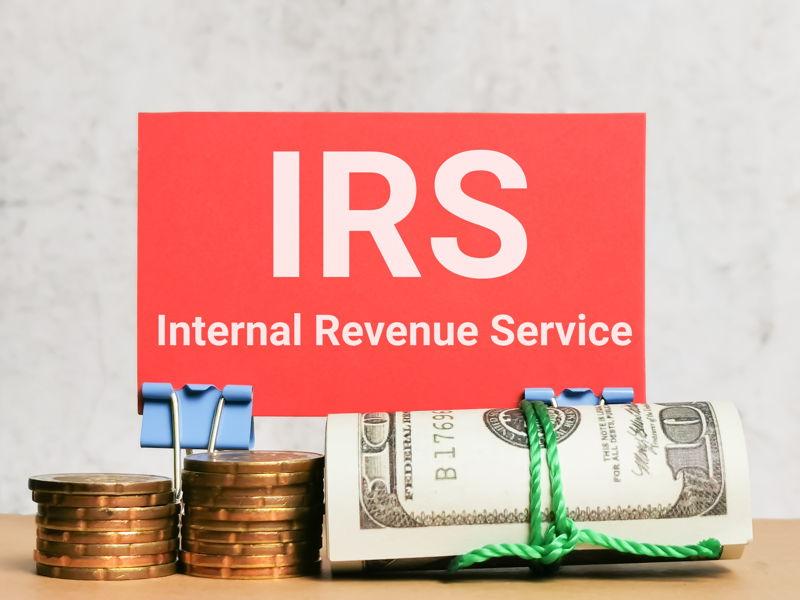An IRS letter can send chills down the spine of any taxpayer. And if it’s an audit letter from IRS, then it can induce full-blown fear in people. However, there are times when you receive an IRS audit letter but they are not as intimidating as the others. Meaning, it can be a correspondence audit.
When dealing with IRS audit letters and the IRS themselves, it is best to learn the nook and cranny of how their system works to better understand their interests, penalties, and fines. Sometimes, when you believe that the IRS has made an error while assessing your tax obligations, you can go on and get an audit reconsideration IRS request.
Questions like “how far back can IRS audit you?” and “how long does an IRS audit take?” floods the internet, with no definitive answer. But, it’s important that you know everything about an audit to better face it the next time you are called for one.
But, have you ever wondered what exactly is a correspondence audit and why is it not as scary as the others? Read ahead and find out!
What is Tax Audit?
A tax audit notice is a type of examination that helps the IRS verify whether you reported your taxes accurately. For income tax audits, it consists of evaluating the objects of income, tax deductions as well as tax credits.
In case you haven’t filed the tax return, the auditor might gather information in order for the IRS to evaluate your tax liability. In simple words, it is basically a firm assessment of an organization’s or individual’s accounts to ensure that they have been compliant with the tax code.
Audits are conducted to verify the accuracy of the tax return filed and to confirm that the reported amount of tax is apt. It’s true that an audit letter from IRS can be scary, but not all audits are intimidating.
There are times when a return has been picked randomly for an audit. There are also times when a person receives an audit letter because they found something shady in the filed return. This means that it is important to be vigilant and careful when it’s about the IRS. But, what do IRS letters look like? Keep reading, and you’ll know!
Getting an audit letter from IRS can be frightening, but knowing your rights can help reduce that stress. To address the concerns raised by the IRS, writing an audit response letter is vital. It’s also a good idea to consult with former IRS agents to ensure that your interests are well represented.
What is a Correspondence Audit?
Imagining that you received a letter from the IRS is in itself incredibly scary. It raises a flood of questions. Is it a bill? A notice? Or, could it be—an audit notice?
Sometimes, it indeed is an audit letter. But before panic sets in, take a closer look. It is probable that the letter is a correspondence audit—the most common and least severe type of audit the IRS conducts.
So, what exactly is a correspondence audit?
Quite simply, it’s a paper audit. You won’t meet its agents or have them sit in your office.
You won’t have to meet IRS agents or lead them on a tour of your home office. Instead, here, the IRS only has a few questions about your tax return that they want you to answer in writing. The agency primarily uses correspondence audits to clear up minor discrepancies or simple issues.
Correspondence audit usually starts when you receive a notice from the IRS requesting for information about a few items on your tax return. These consist of income, expenses, deductions or credits. And don’t worry, the letter will state what the IRS needs from you!
Responding promptly is crucial in a correspondence audit. Take time to gather the necessary documents, organize them clearly, and make copies. Write a professional response, and immediately address all IRS’s questions. Above all, keep a cool mind. However, if the problem is more severe, the answer to your “how long does IRS audit take?” can stretch for more than months. Sometimes, years.
A correspondence audit is usually a routine matter, and as long as you’ve been truthful, there’s typically nothing to worry about. However, people often ask what do IRS letters look like? And it’s probably time that we tell you! Read ahead to find out.
What Does IRS Audit Letter Look Like?
The IRS letter is usually sent through certified mail. They will forward you a Letter 2202B or a Letter 566 for a correspondence audit. They can often also send a Letter 718.
However, the IRS can also issue of the following letters as well:
- Letter 566-S, known as the Initial Contact Notifying Taxpayer of Examination and Requesting Additional Supporting Documentation.
- Letter 525, Proposed Letter of Change to Return and Appeal Rights General 30-Day Letter;
- Letter 2269, Delinquent Individual Return
But, what does a IRS audit letter look like? Read ahead.
The numbers of these letters can be found on the right-hand side of the letter.
Upon receiving an IRS audit letter, you’ll notice some key details on the page. On the upper left-hand side, the IRS office name that dispatched the letter is going to be visible. Typically, these letters come from the Internal Revenue Service, Small Business/Self-Employed (SB/SE) Division.
In the upper right-hand corner, the contact details of the IRS representative managing your case can be found. This information involves the representative’s name, their employee identification number, as well as their phone and fax numbers, providing various avenues for you to reach out.
As per the main body, it will show the specific issues that will undergo examination during the audit process. To know more about the process, you can access IRS audit help!
What Causes You to Get Audited by the IRS?
This question is specifically vital when you have to decide what you want to respond to the audit. There are normally some essential factors why your tax return got selected for an audit. However, most audits aren’t random.
But at times, it becomes critical to consider IRS debt settlement programs, if the taxes on you are severe.
It’s possible that your tax return raised some red flags during the IRS’s computer screening process. The IRS has a complex computer system that cross-references data reported on your return with information from third-party sources, like W-2s and 1099s. This system also uses statistical models to emphasize tax returns that might warrant an audit. Sometimes, understanding how far back can IRS audit is crucial, especially because it can extend well up to three years or past that.
There are numerous factors that result in an IRS audit letter, such as incomplete details, discrepancies in the data, or undertakings not reported on your tax return.
How Far Back Can IRS Audit?
The IRS can travel back and Audit the last 3 years. This general rule applies in case you have filed a tax return. This period usually starts right on the date the IRS receives this tax return. So, how far back can IRS audit taxes? Honestly, it depends.
It is important to note that the IRS typically does not go back to the last 3 years in case of a correspondence audit. Truth be told, repetitive audits are not really normal for correspondence audits.
How Do I Respond to an IRS Audit Letter?
Receiving an audit letter from the IRS can be intimidating, but it’s important to remember that it’s a manageable situation. Here are some steps you should take in responding to an IRS audit letter:
1. Understand the Letter
It is important that you thoroughly read the entire letter to understand what the IRS is asking for. The letter must have the details of the audit and the specific information the IRS needs.
2. Review Your Tax Return
Get a copy of the tax return in question and review it alongside the IRS audit letter. This is going to give you a clearer understanding of what the IRS is asking for.
3. Gather Your Records
It is necessary that you gather all important documents requested in the letter. This can include anything between receipts to bank statements which support your tax return.
4. Reply Timely
Make sure to respond within the timeframe specified in the letter, generally within 30 days. If you need more time, you can request an extension.
5. Submit Your Response
Once you have all the required documentation, submit your response to the IRS. It’s best to forward it by certified mail, so you have proof of delivery. Be sure to keep copies of everything you send.
But, again, what causes you to get audited by the IRS? The reasons can be many. For instance, it can be audit errors to random selection. Despite the situation, choose to be proactive and calm!
Bottom Line
It is incredibly important to understand that a correspondence audit is not always a cause for panic. It is just a means of verifying whether people are following the tax code or not. By being proactive and promptly providing all requested information to the auditor, you can maintain your financial health accurately and make sure you’re compliant with the tax laws. It is always a good decision to ask for help when needed. That is because the primary goal is to stay informed and make the right decisions!








